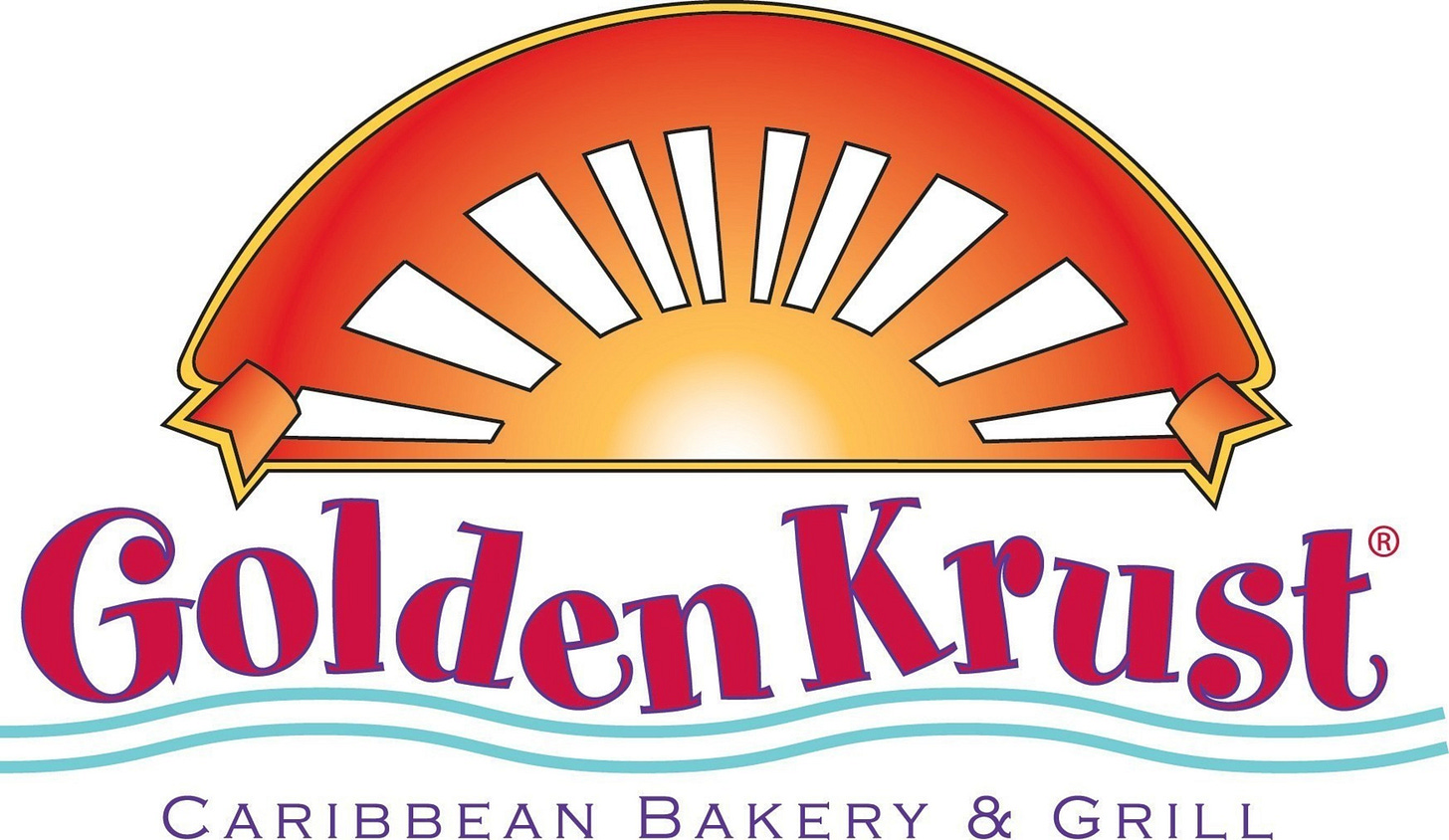Raise Your Flags
Or, the Fast Food of the Diaspora and the Stories We See
The newsletter turns four weeks old today, and I’ve had such fun hearing from subscribers and e-mail list-ers. If you enjoy this content, consider a life with TWICE as much fast food and good teaching content, and subscribe today! In case you missed it, I joined the good people at “The Food that Built America” on HISTORY to talk about the war between McDonald’s and Burger King. Lots of cool kids participated in this documentary, including the ever-glamorous Padma Lakshmi and former food-challenge participant, “Man vs. Food” host Adam Richman. But, my favorite guests were my friend and colleague Dr. Mireya Loza and fellow fast food enthusiast Adam Chandler. Mireya is the author of the book Defiant Braceros: How Migrant Workers Fought for Racial Sexual Freedom and a former curator at the Smithsonian. We’ve been friends for years and she makes sure that the workers that supply our food don’t get forgotten in food history and food studies. Adam Chandler is the author of Drive-Thru Dreams: A Journey Through the Heart of America’s Fast Food Kingdom. Adam takes fast food very seriously, and you can hear us talking about White Castle as if we are talking about brokering global peace on this episode of PROOF from America’s Test Kitchen. Subscribers will be treated to some outtakes from our conversation next week! And, Substack sister and fellow historian Alexis Coe invited me onto her newsletter STUDY MARRY KILL to play the title game, talk about releasing Franchise: The Golden Arches in Black America, and explore what it’s like to be a Black historian today.
On this last Friday of Black History Month, I wanted to reflect on the various communities that comprise Black America. There is no monolithic Black experience, and understanding the contours of slavery, emigration, and immigration allows us to see the complexity in how identity is formed. And, like the foods we eat, everything around us has a history that provides context and clarity. My gravitas-filled statement is a way of celebrating a small—put surprisingly delicious sector—of fast food that reflects the culinary treasures of the African diaspora, particularly the Caribbean and Latin America! As a Haitian-American, I love to raise my ancestral flag whenever I can, and for the majority of my life, I thought that fast food meant food from the United States. It wasn’t until I became a scholar that I realized that the delights of my childhood were available at regional franchises. Here are two of my favorites:
Golden Krust. Founded in the late 1980s, Golden Krust specializes in Jamaican foods, like jerk chicken, coco bread, and the golden-crusted beef patty. My cousin once yelled at me for eating at a Golden Krust in Harlem because there is much better Caribbean food in Brooklyn and Queens. Yet, he failed to recognize that I was doing research at the nearby Schomburg Center for Research in Black Culture (named for Afro-Puerto Rican bibliophile Arturo Schomburg), and that it has been my life’s dream to eat at a Golden Krust. Could my mom make better rice and beans? Of course. Was it still a joyous occasion? You bet. Golden Krust has expanded to more than 100 franchise locations, and you can get their patties at the grocery store in the frozen foods aisle. The conversion of fast food products to grocery offerings will be the topic of a future newsletter, but for now, I will say that the popularity of Jamaican beef patties in the United States reveals the ways that immigrants have contributed to the evolving tastes of a broader public. And, the fact that Golden Krust supplies schools and jails (as illustrated here by the Marshall Project) speaks volumes about the processed food distribution chain and the fast food industry, but you didn’t ask me about this. Anyway, the company may have reached peak popular culture status when late founder Lowell Hawthorne appeared on an episode of Undercover Boss, which is a strange indictment of capitalism and a celebration of it. Hawthorne published an autobiography—one of many in the literary genre of fast-food founder life narratives—entitled The Baker’s Son: My Life in Business.
El Pollo Tropical. In the before times, my husband and I loved visiting Miami for the holidays. The first stop after landing in the MIA airport is the drive thru of El Pollo Tropical, a grilled chicken concept that describes itself as Caribbean inspired. Founded in 1988 in Miami, El Pollo Tropical caters to the Pan-American feel of the Magic City. The proteins are just so-so, but I live for a side dish, and Pollo Tropical delivers the delights of my childhood: sweet and not-sweet plantains (maduros v. tostones) and perfectly cooked white rice. Other treats include fried yucca and black beans. El Pollo Tropical soared in Miami, but my cousin’s point resonates: Why would someone eat there when Miami is filled with more authentic Cuban restaurants? The same can be said about a lot of food styles, but the appeal of fast food—the speed of delivery, the ability to remain in one’s care the entire time, and the consistent, yet comforting blandness of fast food—remains. Unfortunately, Pollo Tropical’s expansion plans mirrors the many failed efforts of other brands. The palate of South Floridians is distinct, and after a mass wave of openings, my favorite tropical chicken had to initiate a massive wave of closings. Outside of Florida, the menu didn’t work, and Pollo Tropical has been purchased and re-purchased several times over by franchise conglomerates. And, in the ultimate fast-food Hail Mary, Pollo Tropical started offering more beef dishes at their Texas restaurants, experimented with table service, and even added ‘American’ side items like mashed potatoes and macaroni and cheese (this makes me sad). Pollo Tropical is a prime example of why expansion doesn’t always make sense in the food business, and that context matters. There is no good reason for me to commence my vacations with fast-food chicken, but I still do. If you enjoy Miami as much as I do, I recommend ordering a pollo and pork family meal and reading Nathan Connolly’s A World More Concrete: Real Estate and the Remaking of Jim Crow South Florida to learn more about Black diasporic history and the development of the city.

As a non-parent during the pandemic, I’m always curious about how my friends are relaxing rules about screen time. As I’ve discussed several times in this newsletter, screen time was a not an existential concept in my childhood, and my love of television was cultivated during hours of watching shows while doing homework. In every educator’s life, there is a day where you decide to screen a film. Sometimes because the movie will change your students’ life, sometimes because you just need a break from teaching. Either way, there are so many great ways to teach a movie to maximize student learning.

Work Backward on a Film. In a recent presentation for ProQuest, I shared how I had students annotate the 2014 Ava DuVernay film Selma. Students watched the film on their own, and in class, I walked them through the historical resources necessary to make such a film. I introduced them to the Martin Luther King Research and Education Institute at Stanford University to look at some of King’s most important speeches, an online fashion library to explore costume design and wardrobe choices, and The HistoryMakers oral history, video archive to demonstrate the research necessary for a good, fictionalization of a historic event. It was fun to help them think through the planning of the movie and it helped them understand the creative process as an intellectual one and vice versa.
I often assign documentaries in my courses, and due to the nature of the genre, students often take at face value that all that is presented to them as fact. So, I like to find films about the same topic produced in different eras to help them understand the evolution in thinking around a topic or modes of analysis. I do this by looking at the representation in the Eyes on the Prize: America’s Civil Rights Movement series about the Black Panther Party for Self Defense from 1987 and a more recent one, Black Panthers: Vanguard of the Revolution (2016) from filmmaker Stanley Nelson to discuss the implicit and explicit cues about women’s participation in the movement. If you prime students to notice specific facets of the storytelling, you will find that the quality of the conversation about the film is better.
I love a good clip show. Do sitcoms still make them? Well, you can provide the next generation the thrill of seeing vignettes of your course material with a nice series of clips. For my “Sex, Love, and Race in American Life and Culture” class, I present a clip show on the representation of interracial relationships in film and TV. It’s so fun and it doesn’t waste the last day of class with just a summary of what we covered over the semester, the clip show allows the students to see the themes for the course. I like to string together the impassioned scenes of (the most overacted film in history) 1967’s “Guess Whose Coming to Dinner,?” with the (promoted as salacious, but not actually salacious) 1961 film“My Baby is Black!,” and introduce students to the 1975 Romeo-and-Juliet-inspired film, “Aaron Loves Angela” (featuring a very corny and touching note passing scene with Jose Feliciano). I round out the presentation with more contemporary representations and ask students to pay attention to change and continuity over time.
It’s good fun and it can put a fine point on the course. Trust me, everyone loves a clip show!
Hope you have a great week ahead!
Your Favorite Prof


